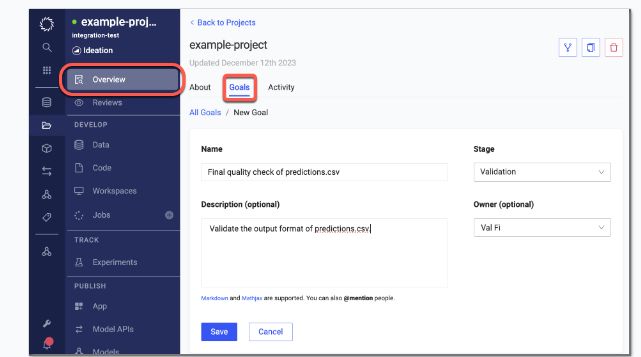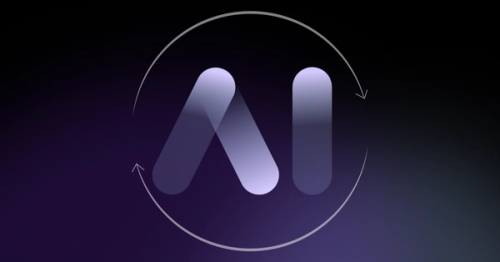5.10 release improves researcher productivity, onboarding, and QC traceability
Leila Nouri2024-05-16 | 6 min read

Domino’s 5.10 release creates new operational efficiencies across clinical and bioinformatics research and data science workflows. Domino’s newly released features and functionality shorten onboarding time, modernize and streamline user experience, and improve the traceability of data science workloads. Let’s explore further details of Domino’s 5.10 release optimizations, integrations, and new features.
QC goal tracking with Domino Task Management
Previously, highly regulated BioPharma and Clinical Development researchers could only sometimes achieve GxP-compliant Quality Control (QC) workflows fully since clinical study QC processes were not traceable or auditable in Domino. This forced users to rely on external, non-integrated solutions. For example, Excel sheets were used to track tasks, resulting in inconsistencies and inaccuracies that increased non-compliance risks.
In addition, QC workflows lacked owner assignments, custom workflows/stages, and auditing changes in "goals," rendering them insufficient for GxP-compliant QC. In addition, comments, edits, and deletions were inconsistently documented in manual systems outside Domino, breaking the continuous trace and level of traceability necessary to maintain GxP compliance.
Domino’s 5.10 release now introduces integrated QC goal tracking to manage clinical study QC projects and tasks in a unified, traceable, and accurate way – all in Domino. For example, users can now share unblind reports with their clinical teams before a database freeze or integrate QC into third-party project management tools like Jira to improve visibility and traceability. Customers can also set custom stages for QC goals, allowing project leads to implement risk-based QC tasks tailored to each project. They can even assign goals to project collaborators, ensuring clear responsibility and accountability, and even attach files and necessary activities to accelerate time to results.
In addition, managers can view all changes to goals (e.g., stage, owner, comments, screenshots) in a centralized activity feed that logs everything in an audit trail to maintain documentation for submission or regulatory responses. For example, managers can see if all QC gates are passed, where there are delays, and when collaborators such as study lead programmers execute plans. Integrating QC tracking also improves the traceability of all data science and AI projects, which helps ensure GxP compliance and lower risks.

Nextflow® integration optimizes bioinformatics workflows
Nextflow® is a workflow manager designed to ease the creation and execution of bioinformatics pipelines-as-code. Its open source nf-core project provides a set of predefined Nextflow pipelines that guarantee reproducible results, which can be used as templates for a customer’s own custom pipeline. Its scalable containerized architecture and seamless Git integration make Domino an ideal development and execution platform for Nextflow pipelines.
Customers can now reduce compute spending by running predefined and customized nf-core pipelines in Domino. Predefined pipelines in the open source nf-core project are highly optimized for parallel processing by leveraging Domino’s scalability without changing the pipeline code line.
Improved collaboration and user experience with Git integration
Most statistical programmers have limited Git proficiency, hindering their ability to fully utilize it within Domino to efficiently create, edit, merge, and collaborate on files or code to accelerate research results through enhanced collaboration. And even users accustomed to using Gits and platforms like GitHub have to switch platforms and leave Domino to access Gits and collaborate, which is inefficient and inconvenient.
Before this release, commit messages in Git-based projects within Domino would be auto-generated if left blank, bypassing best practices for meaningful commit messages. Now, Domino can generate Mandatory Git Commit Messages for customers who require strict commit message hygiene, making it easy to institute best practices for version control and traceability.
In addition, Domino now enables statistical programmers to view the contents of various file types stored in Git repositories directly in the Domino UI, eliminating the need for external tools and context switching.
Finally, Domino streamlines workflows by enabling one-click workspace creation from new branches (instead of writing code to up-version or creating a new branch in Git), making project management more efficient. A single, cohesive UI now improves flexibility with easy branch creation, workspace setup, and project change management.
Simplified file extension viewing
Before the 5.10 release, data scientists, programmers, and researchers had to download some data directly onto their machines or cloud environments to access files through five to ten steps. This was inconvenient and posed risks. Now, Domino makes accessing different data stored in Domino easier, resulting in faster viewing of files, including Doc(x), Rtf, Sas7bdta, ppt(x), .CSV, and XLS files.
Next steps
Discover more about Domino’s 5.10 release frameworks, features, and improvements by checking out these release notes on the documentation page.
Leila Nouri, Director of Product Marketing at Domino Data Lab, is an innovative and data-driven product marketing leader with 15+ years of experience building high-performing teams, go-to-market campaigns, and new revenue streams for startups and Fortune 500 companies.



